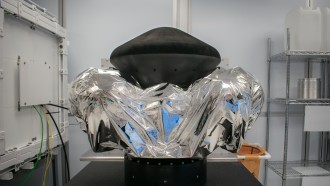The number of children and teenagers in the United States poisoned by opioid painkillers has more than doubled over the past decade and a half, according to a new study conducted by Yale University researchers.
From an average of 1.40 for every 100,000 children, the rate of opioid poisonings among young patients rose to an alarming 3.71 for every 100,000 between 1997 and 2012.
Julie Gaither, a researcher at the Yale School of Public Health and lead author of the study, said opioid medications have now become ubiquitous, so much so that there are enough painkillers available to seemingly put a bottle in every U.S. home.
"They're everywhere, and kids are getting into them," Gaither said.
Painkiller Poisonings Among Young Children And Teenagers
For their report, Gaither and her colleagues studied more than 13,000 cases of opioid poisonings that occurred between 1997 and 2012. They then compared their findings with census data to determine the rates.
The researchers found that the rate of painkiller poisoning among toddlers rose from 0.86 for every 100,000 kids to 2.62 for every 100,000 during that period. Experts believe these young patients may have mistaken opioid medications for candy since these drugs are available as pills, patches and even flavored lollipops.
Teenagers have also been found to be particularly susceptible to opioid poisoning. According to Gaither and her team, teens are more likely to overdose on opioids deliberately because they are more vulnerable to suicide and depression than most other age group. The rate of painkiller poisoning among teens in 2012 was recorded at 10.17 for every 100,000.
Safer Storage For Opioid Medications
Overprescribing is often seen as the root cause of opioid abuse among patients, but the Yale researchers believe that there is also a need to raise public awareness on how to safely store painkillers.
Gaither said doctors should guide their patients when it comes to properly storing their pain medications, especially if they have young children living with them in the same household.
The new study also suggests that doctors need to be more careful in prescribing medications to young patients.
A study published in 2012 found that about one in 10 high schoolers took opioids for nonmedical reasons, while another paper in 2010 reported that as much as 40 percent of teens who took these drugs said they were able to get them through the use of an earlier prescription given to them.
The findings of the Yale University study are featured in the journal JAMA Pediatrics.








